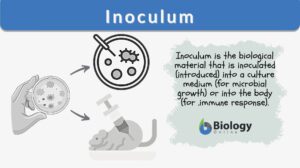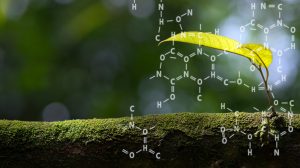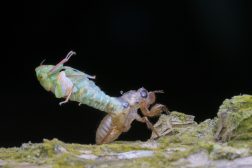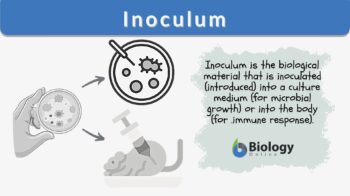
Inoculum
n., plural: inocula or inoculums
[ɪˈnɒkjʊləm]
Definition: a biological material (like a virus or toxin or immune serum)
Table of Contents
Inoculum Definition
Inoculation is a term often heard in microbiology, one of the branches of biology that deals with the study of microorganisms which includes unicellular organisms, viruses, and bacteria (Toppr, 2020). It is a process or technique that involves the transferring of microorganisms from culture for growth. Thus, in microbiology, the term inoculum refers to the material in which microbiologists used for inoculation, i.e., the introduction of microorganisms into a culture medium. The technique is commonly done using an inoculation needle (also called an inoculation loop). Inoculation is carried out to grow microorganisms in a culture medium under specific growth conditions.
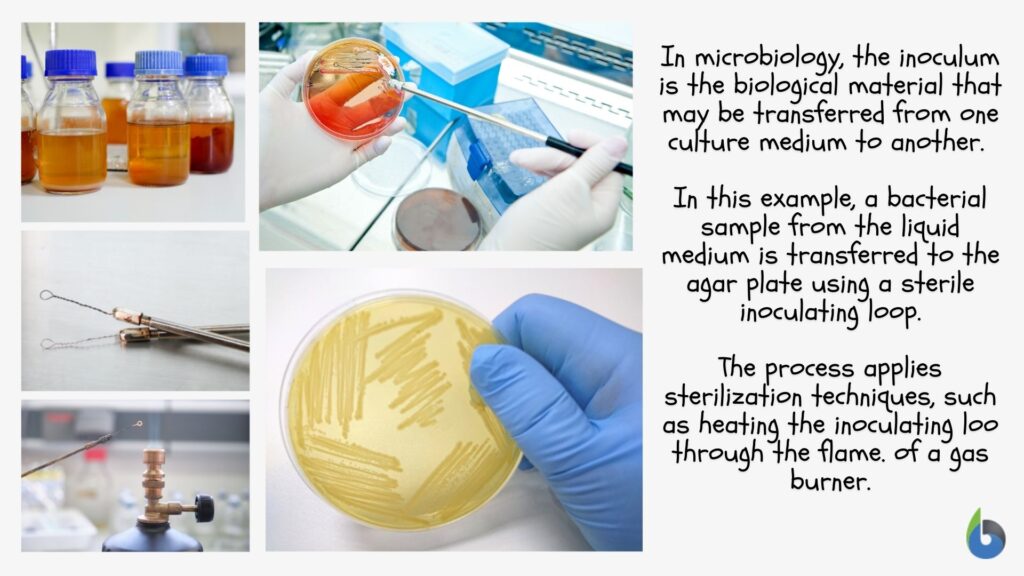
What is an inoculum in biology? Apart from being a microbiological concept that refers to the biological material used for creating cultures, the term inoculum also refers to the small sample of viruses, bacteria, or other microorganisms administered to the body to incite an immune response. We can further define inoculum as follows:
- In medicine, the inoculum affects the material that is the source of inoculation in a vaccine
- In microbiology, it refers to viruses and cells that are used to inoculate a new culture
- Microbial inoculant refers to the use of microbes in plant biotechnology, e.g., for improving plant health
- In fermentation, it is used for the production of food
Inoculum is a biological material used for inoculation, the process of introducing biological material, such as cells added to start a microbial culture. It may also refer to a biological material (like a virus or toxin or immune serum) that is injected to induce or increase immunity to a particular disease. Etymology: New Latin, from Latin inoculāre, to graft a scion. Synonym: inoculant. See also: inoculation.
Inoculum versus Vaccine
Inoculum is a more general term than the vaccine. A vaccine is a suspension that is administered into the body in order to stimulate the body’s immune system, specifically by inciting the production of antibodies. Inocula are biological materials that may be introduced into the body (to incite immune response) or into a culture medium (to allow growth and reproduction of microorganisms).
Inoculum Size
An inoculum size is the needed concentration of microorganisms for a standard test (Khateeb, 2017). This definition of inoculation is applicable in research and laboratories. In the laboratory, scientists perform certain experiments and study the growth of microorganisms under certain environments with certain species and strains of microorganisms.
Inoculum Examples
In microbiology, an example of inoculum is the bacterial sample introduced into the culture medium. There are different types of media are used in inoculation. They are as follows:
- Agar plates are media that are used for the growth of bacteria and microorganisms. For the growth of bacteria, a mixture of nutrients and agar is used. To solidify this agar solution, this material is then poured into circular Petri dishes. After this, a sample from a solution containing microorganisms is introduced into the agar plate using a streaking loop or needle dipped into the solution. Plates are stored at a certain temperature for the growth of bacteria.
- Slant culture is a culture containing a medium with a characteristic slanting surface. Unlike agar that makes use of a plate, a slant culture medium makes use of a test tube. This is often used to provide bacterial inoculants with a greater surface area to grow while minimizing water loss by capping the test tube.
- Broth culture is a culture medium that allows bacterial growth in a liquid growth medium. This is often used to grow and maintain bacterial cultures, especially when maintaining a specific bacterial inoculant carrying a particular plasmid (e.g., Luria broth). Can a pure culture be prepared from a mixed broth? Yes, a pure culture can be prepared from the mixed broth. For this purpose, it is necessary first to separate the components of mixed culture. The separation is done by diluting the mixture, spread plate technique, or by doing streak plate. We can grow pure cultures after we get individual colonies (Kapagianni, Papadopoulos, Menkissoglu‐Spiroudi, Stamou, & Papatheodorou, 2019).
- Stab culture is a culture medium in a test tube but not slanted. An inoculation needle is used for the introduction of bacterial into the stab culture. The punctured area allows the growth of the inoculum. This is particularly useful when shipping or for short-term storage of microbial cultures.
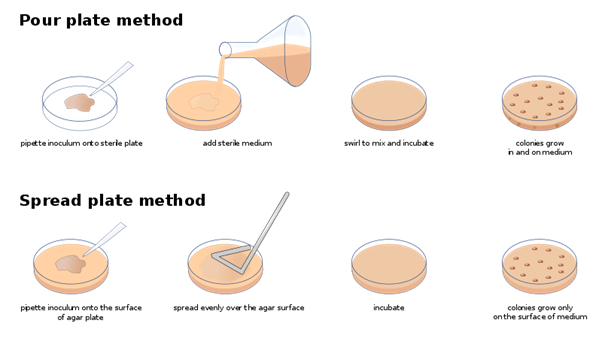
In immunology, an example of inoculum is the introduction of the pathogen or a part of the pathogen into the host’s body to initiate the infection process (defined as the intimate contact of the pathogen with its host). Thus, the inoculant may be an intact bacterial cell, protozoan, virus, or viroid. Depending on the type of infections caused, the inoculum may be primary or secondary. The primary inoculum causes the original infection whereas the secondary inoculum is that produced from primary infections. (Abdulkhair & Alghuthaymi, 2016)
In early history, inoculation of a mild strain of pathogenic bacteria was practiced as a form of medical practice to boost immunity against certain diseases. People were deliberately exposed to the pathogen by infecting them with a mild strain of the pathogen. Variola minor, for instance, was introduced into the body to create a mild form of the disease. This, in turn, would lead to immunity against smallpox. However, this practice was replaced with modern-day vaccination practices as the crude inoculation of pathogenic bacteria led to the deaths of certain inoculated individuals.
The main example of inoculation is the formation of the vaccine, such as the flu vaccine (Chien, 2013). . The vaccine is a biological material that is inserted into the body to induce or enhance immunity.
Try to answer the quiz below to check what you have learned so far about inoculum.
References
- Abdulkhair, W. M., & Alghuthaymi, M. A. (2016). Plant Pathogens. Plant Growth. https://doi.org/10.5772/65325
- Chien, Y.-H. (2013). Persuasiveness of online flu-vaccination promotional banners. Psychological Reports, 112(2), 365–374.
- Kapagianni, P. D., Papadopoulos, D., Menkissoglu‐Spiroudi, U., Stamou, G. P., & Papatheodorou, E. M. (2019). Soil functionality produced by soil mixing: The role of inoculum and substrate. Ecological Research, 34(5), 600–611.
- Khateeb, B. (2017). What is the exact meaning of inoculum size? And how is it applied industrially? Retrieved November 16, 2021, from https://www.researchgate.net/post/What-is-the-exact-meaning-of-inoculum-size-And-how-is-it-applied-industrially
- Toppr. (2020). Inoculation – Definition and Types of Media Used for Inoculation. Retrieved November 16, 2021, from https://www.toppr.com/guides/biology/microorganisms/inoculation-definition-microbiology/
©BiologyOnline.com. Content provided and moderated by Biology Online Editors.

